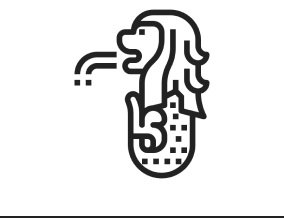Imagine trying to run a modern business using outdated tools. Your data is slow, reports take forever, and making timely decisions feels impossible. That’s exactly what happens when companies stick with older versions of SAP BW.
As technology advances and businesses demand faster, smarter data insights, it’s becoming clear: staying on legacy SAP BW systems is holding companies back.
That’s why more and more organizations are turning to SAP BW migration — a move that’s not just about upgrading software, but about transforming how your business handles data.
But what does SAP BW migration really mean? Why do you need it? And how can you do it successfully?
Let’s break it down in simple terms.
What is SAP BW?
SAP BW stands for SAP Business Warehouse. It is a data warehousing solution that collects, stores, and processes data from different sources to help businesses make better decisions. Think of it as a big storage room where all your business data is organized neatly for easy access and analysis.
What is SAP BW Migration?
SAP BW migration means moving your existing BW system to a newer version or platform. This usually involves shifting from:
- SAP BW to SAP BW/4HANA (a newer, faster version that runs on HANA)
- SAP BW to SAP Datasphere (a cloud-based solution)
Migration helps improve performance, reduce complexity, and prepare your system for future technologies like AI and advanced analytics.
Why Should You Migrate?
Here are some key reasons:
1. End of Support
SAP has announced that older versions of SAP BW (like BW 7.5) will not be supported after 2027 (or 2030 with extended support). Migrating ensures you’re not left behind.
2. Better Performance
New platforms like SAP BW/4HANA or SAP Datasphere are faster, more efficient, and use in-memory computing, which means your reports and dashboards run much quicker.
3. Simpler Architecture
Migration helps you get rid of old, complex, and custom code. You move to a cleaner and more manageable system.
4. Cloud Readiness
Migrating to cloud solutions like SAP Datasphere allows you to scale easily, save costs on hardware, and access data from anywhere.
Types of SAP BW Migration
There are mainly three approaches:
1. In-Place Conversion
This is like upgrading your current car’s engine without changing the body. You stay on the same system but upgrade the software to BW/4HANA.
2. Remote Conversion
Here, you start fresh on a new BW/4HANA system and move only the necessary data and models. This is good if you want to clean up and simplify.
3. Shell Conversion
You move your BW structure (without data) to the new system and then reload only the required data. This gives a clean start with minimal baggage.
Steps Involved in Migration
Here’s a simple overview of how SAP BW migration works:
Step 1: Assessment
- Understand your current BW system
- Identify which data and reports are critical
- Check if you are ready for BW/4HANA or cloud
Step 2: Planning
- Choose the migration type (in-place, remote, or shell)
- Set timelines and allocate resources
- Create a backup and risk plan
Step 3: Preparation
- Clean up unused data and objects
- Simplify existing models
- Upgrade tools and patches
Step 4: Execution
- Perform the migration using tools like SAP Transfer Toolbox, SUM-DMO, or SAP BW Migration Cockpit
- Monitor for issues during and after the move
Step 5: Testing and Validation
- Make sure reports, dashboards, and data are accurate
- Involve business users to validate key reports
Step 6: Go-Live and Support
- Switch to the new system
- Provide training and support to users
- Monitor performance and fix any issues quickly
Best Practices for a Smooth Migration
- Start early – Don’t wait until the last moment
- Clean your system – Remove what you don’t need
- Involve business users – They know what data matters most
- Use migration tools – SAP provides tools to make migration easier
- Test everything – Make sure everything works before go-live
Final Thoughts
Migrating your SAP BW system is not just a technical upgrade – it’s a chance to modernize your data platform, improve speed, and prepare for the future. While the process can be complex, good planning, the right tools, and expert help can make it smooth and successful.
Whether you’re moving to SAP BW/4HANA or exploring cloud solutions like SAP Datasphere, now is a great time to start your journey. Need help with SAP BW migration? Let us know – we can guide you step by step to ensure a smooth transition.






